#cleveland museum of natural history
Text


you never realize just how tiny platypus are until you see them in person!
(male study skin and articulated skeleton at the Cleveland Museum of Natural History)
the museum's closed off for a full reno right now, but there was an event this past Monday I went to with all the different departments having tables to show off what they do. ended up having a really nice time and talks with the staff! also learned they're 3d scanning their primate skull collection and putting them online, they had this super old gorilla that was massive they were showing the equipment off on. :o
#cmnh#natural history#vulture culture#taxidermy#cleveland museum of natural history#dead animal#study skin#skeleton#museum specimen
175 notes
·
View notes
Text
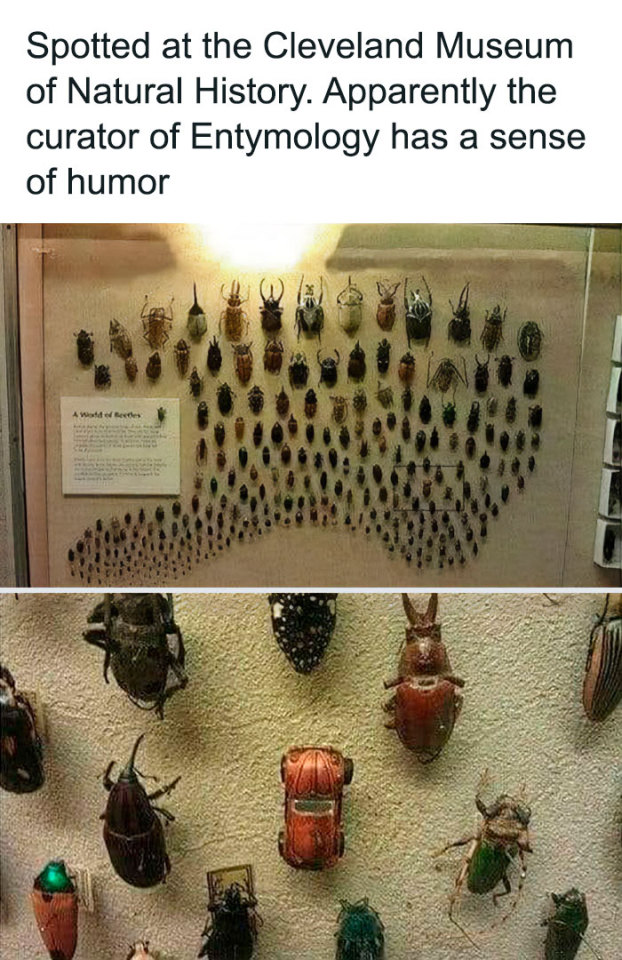
2 notes
·
View notes
Text
Fossil Friday

Allosaurus fragilis teaching her offspring how to hunt Barosaurus lentus at NHMU.
#paleontology#fossils#dinosaur#utah#natural history#museum#late jurassic#Cleveland-Lloyd quarry#jurassic national monument
9 notes
·
View notes
Text
DINOSAUR DINOSAUR DINOSAUR DINOSAUR DINOSAUR DINOSAUR DINOSAUR DINOSAUR DINOSAUR DINOSAUR DINOSAUR DINOSAUR DINOSAUR DINOSAUR DINOSAUR DINOSAUR DINOSAUR DINOSAUR DINOSAUR DINOSAUR DINOSAUR

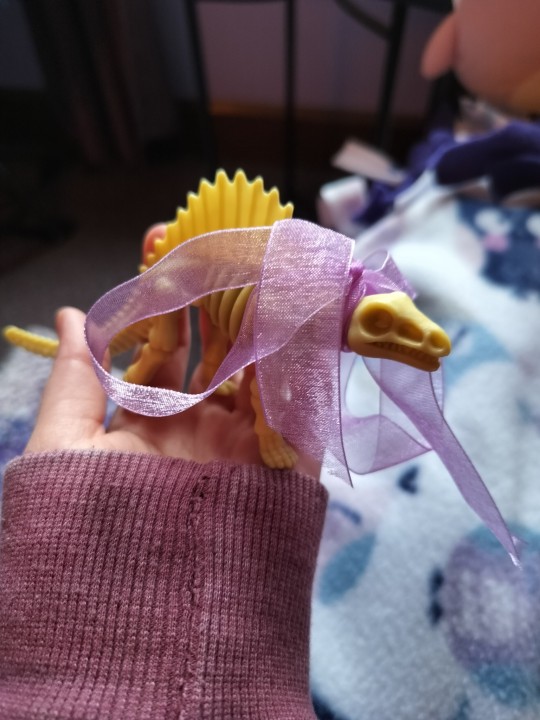

#dinosaur#dinosaurs#dino#dinosaur from the Cleveland natural history museum#dino toy#coquette#coquette dino#dino with a bow
5 notes
·
View notes
Text

The American Museum of Natural History this weekend will close two major halls exhibiting Native American objects – galleries dedicated to the Eastern Woodlands and the Great Plains – its leaders said Friday, in a dramatic response to new federal regulations that require museums to obtain consent from tribes before displaying or performing research on cultural items.
Museums around the U.S. have been covering up displays as curators scramble to determine whether they can be shown under the new regulations. The Field Museum in Chicago covered some display cases, the Peabody Museum of Archaeology and Ethnology at Harvard University said it would remove all funerary belongings from exhibition, and the Cleveland Museum of Art has covered up some cases.
The changes are the result of a concerted effort by the Biden administration to speed up the repatriation of Native American remains, funerary objects and other sacred items.
Source: New York Times
139 notes
·
View notes
Text
Coral today is an icon of environmental crisis, its disappearance from the world’s oceans an emblem for the richness of forms and habitats either lost to us or at risk. Yet, as Michelle Currie Navakas shows in her eloquent book, Coral Lives: Literature, Labor, and the Making of America, our accounts today of coral as beauty, loss, and precarious future depend on an inherited language from the nineteenth century. [...] Navakas traces how coral became the material with which writers, poets, and artists debated community, labor, and polity in the United States.
The coral reef produced a compelling teleological vision of the nation: just as the minute coral “insect,” working invisibly under the waves, built immense structures that accumulated through efforts of countless others, living and dead, so the nation’s developing form depended on the countless workers whose individuality was almost impossible to detect. This identification of coral with human communities, Navakas shows, was not only revisited but also revised and challenged throughout the century. Coral had a global biography, a history as currency and ornament that linked it to the violence of slavery. It was also already a talisman - readymade for a modern symbol [...]. Not least, for nineteenth-century readers in the United States, it was also an artifact of knowledge and discovery, with coral fans and branches brought back from the Pacific and Indian Oceans to sit in American parlors and museums. [...]
---
[W]ith material culture analysis, [...] [there are] three common early American coral artifacts, familiar objects that made coral as a substance much more familiar to the nineteenth century than today: red coral beads for jewelry, the coral teething toy, and the natural history specimen. This chapter is a visual tour de force, bringing together a fascinating range of representations of coral in nineteenth-century painting and sculptures.
With the material presence of coral firmly in place, Navakas returns us to its place in texts as metaphor for labor, with close readings of poetry and ephemeral literature up to the Civil War era. [...] [Navakas] includes an intriguing examination of the posthumous reputation of the eighteenth-century French naturalist Jean-André Peyssonnel who first claimed that coral should be classed as an animal (or “insect”), not plant. Navakas then [...] considers white reformers, both male and female, and Black authors and activists, including James McCune Smith and Frances Ellen Watkins Harper, and a singular Black charitable association in Cleveland, Ohio, at the end of the century, called the Coral Builders’ Society. [...]
---
Most strikingly, her attention to layered knowledge allows her to examine the subversions of coral imagery that arose [...]. Obviously, the mid-nineteenth-century poems that lauded coral as a metaphor for laboring men who raised solid structures for a collective future also sought to naturalize a system that kept some kinds of labor and some kinds of people firmly pressed beneath the surface. Coral’s biography, she notes, was “inseparable from colonial violence at almost every turn” (p. 7). Yet coral was also part of the material history of the Black Atlantic: red coral beads were currency [...].
Thus, a children’s Christmas story, “The Story of a Coral Bracelet” (1861), written by a West Indian writer, Sophy Moody, described the coral trade in the structure of a slave narrative. [...] In addition, coral’s protean shapes and ambiguity - rock, plant, or animal? - gave Americans a model for the difficulty of defining essential qualities from surface appearance, a message that troubled biological essentialists but attracted abolitionists. Navakas thus repeatedly brings into view the racialized and gendered meanings of coral [...].
---
Some readers from the blue humanities will want more attention, for example, to [...] different oceans [...]: Navakas’s gaze is clearly eastward to the Atlantic and Mediterranean and (to a degree) to the Caribbean. Many of her sources keep her to the northern and southeastern United States and its vision of America, even though much of the natural historical explorations, not to mention the missionary interest in coral islands, turns decidedly to the Pacific. [...] First, under my hat as a historian of science, I note [...] [that] [q]uestions about the structure of coral islands among naturalists for the rest of the century pitted supporters of Darwinian evolutionary theory against his opponents [...]. These disputes surely sustained the liveliness of coral - its teleology and its ambiguities - in popular American literature. [...]
My second desire, from the standpoint of Victorian studies, is for a more specific account of religious traditions and coral. While Navakas identifies many writers of coral poetry and fables, both British and American, as “evangelical,” she avoids detailed analysis of the theological context that would be relevant, such as the millennial fascination with chaos and reconstruction and the intense Anglo-American missionary interest in the Pacific. [...] [However] reasons for this move are quickly apparent. First, her focus on coral as an icon that enabled explicit discussion of labor and community means that she takes the more familiar arguments connecting natural history and Christianity in this period as a given. [...] Coral, she argues, is most significant as an object of/in translation, mediating across the Black Atlantic and between many particular cultures. These critical strategies are easy to understand and accept, and yet the word - the script, in her terms - that I kept waiting for her to take up was “monuments”: a favorite nineteenth-century description of coral.
Navakas does often refer to the awareness of coral “temporalities” - how coral served as metaphor for the bridges between past, present, and future. Yet the way that a coral reef was understood as a literal graveyard, in an age that made death practices and new forms of cemeteries so vital a part of social and civic bonds, seems to deserve a place in this study. These are a greedy reader’s questions, wanting more. As Navakas notes in a thoughtful coda, the method of the environmental humanities is to understand our present circumstances as framed by legacies from the past, legacies that are never smooth but point us to friction and complexity.
---
All text above by: Katharine Anderson. "Review of Navakas, Michele Currie, Coral Lives: Literature, Labor, and the Making of America." H-Environment, H-Net Reviews. December 2023. Published at: [networks.h-net.org/group/reviews/20017692/anderson-navakas-coral-lives-literature-labor-and-making-america] [Bold emphasis and some paragraph breaks/contractions added by me.]
61 notes
·
View notes
Photo
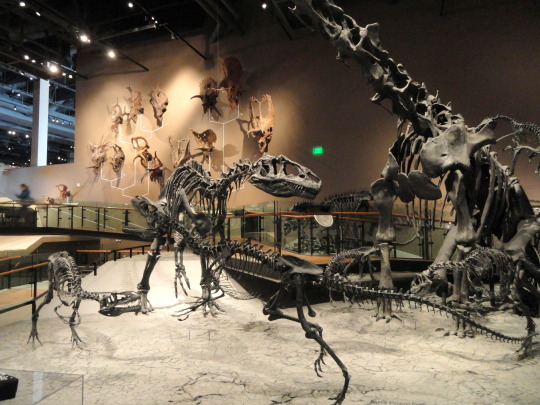
A photo of the Past Worlds exhibit at the Natural History Museum of Utah, which includes representations of various dinosaurs found in the Cleveland-Lloyd Dinosaur Quarry.
#Palaeoblr#Dinoblr#Natural History Museum of Utah#NHMU#Jurassic#Mesozoic#Extinct#Prehistoric#Museum#Photo#Dinosaurs#Ceratopsian#Theropod#Sauropod
185 notes
·
View notes
Note
Today's bird is this barred owl at the Cleveland Museum of Natural History!
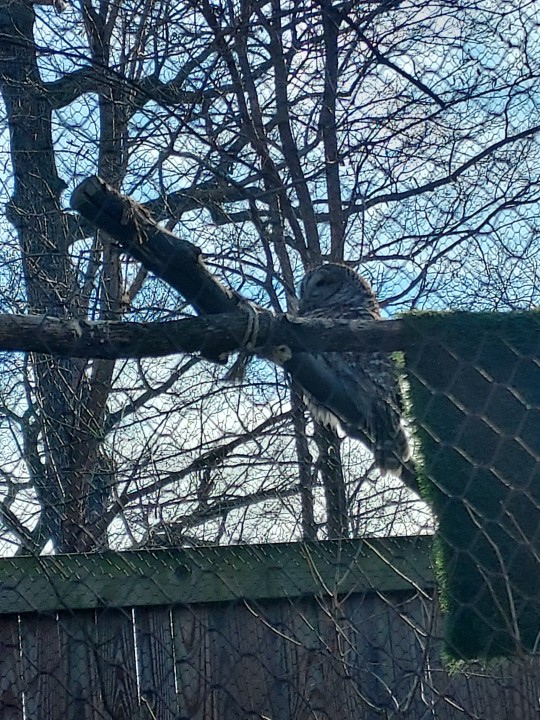
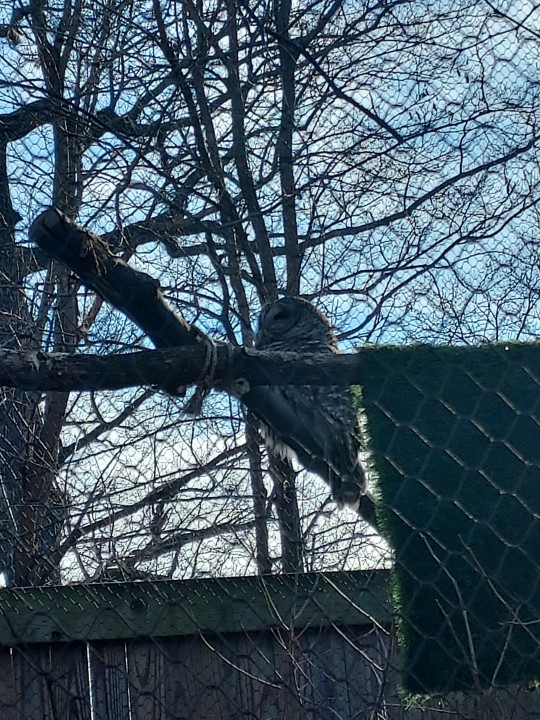
!
84 notes
·
View notes
Text
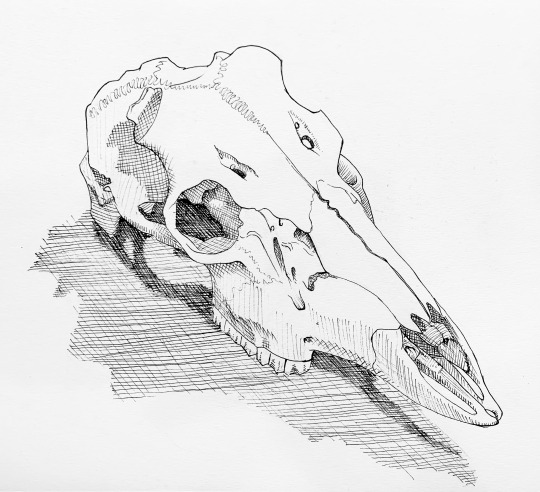
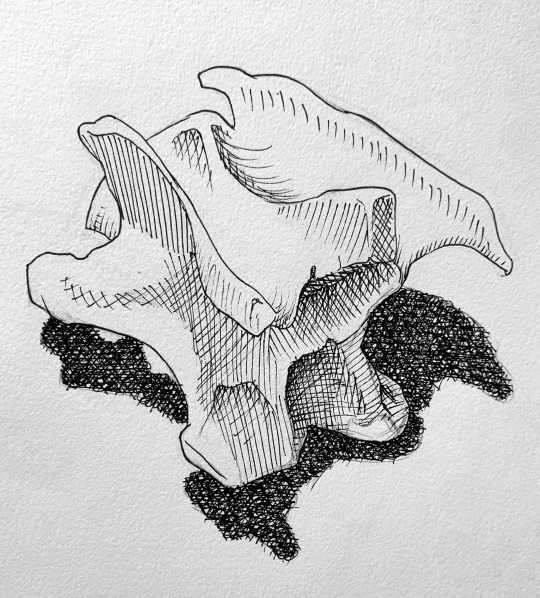
Drew some bones while at the Cleveland Museum of Natural History!
11 notes
·
View notes
Text
SCIENCE NEWS
Your last-minute guide to Monday's total solar eclipse
SHARE THIS —
April 4, 2024, 5:59 PM EDT / Updated April 5, 2024, 4:15 PM EDT
By Denise Chow and Lucas Thompson
A total solar eclipse will cross North America on Monday, offering millions a rare opportunity to see afternoon skies temporarily darken as the moon blocks the face of the sun.
Tune into NBC News NOW as Lester Holt hosts a two-hour special at 2 p.m. ET Monday from Indianapolis Motor Speedway.https://8c72a564604f613854c18f3f70fe4dd4.safeframe.googlesyndication.com/safeframe/1-0-40/html/container.html?n=0
The eclipse's path fortuitously cuts across Mexico, 15 U.S. states and a small part of eastern Canada. In all other states in the continental U.S., viewers will be treated to a partial solar eclipse, with the moon appearing to take a bite out of the sun and obscuring part of its light.
Here’s everything you need to know about the rare celestial event.
What is a solar eclipse?
Solar eclipses occur when the sun, moon and Earth align. The moon passes between Earth and sun, temporarily blocking the sun’s light and casting a shadow on Earth.
Solar eclipses occur only with the new moon. Because the moon’s orbit around Earth is tilted, the three bodies don’t always line up in a way that creates an eclipse.https://8c72a564604f613854c18f3f70fe4dd4.safeframe.googlesyndication.com/safeframe/1-0-40/html/container.html?n=0
“Imagine if the moon’s orbit were in the plane of Earth’s orbit around the sun — if that were the case, then every new moon, you’d have a total solar eclipse and every full moon, you’d have a lunar eclipse,” Neil DeGrasse Tyson, director of the Hayden Planetarium at the American Museum of Natural History, told NBC News. “So, because things don’t always align, it lends to the rarity of the event and the specialness of the event.”
Where and when will the eclipse be visible?
This year’s eclipse will follow a slightly wider path over more populated areas of the continental U.S. than other total solar eclipses have in the recent past.
The path travels through Texas, Oklahoma, Arkansas, Missouri, Illinois, Kentucky, Indiana, Ohio, Pennsylvania, New York, Vermont, New Hampshire and Maine. Tiny parts of Michigan and Tennessee will also be able to witness totality if conditions are clear.https://8c72a564604f613854c18f3f70fe4dd4.safeframe.googlesyndication.com/safeframe/1-0-40/html/container.html?n=0
After the eclipse crosses into Canada, it will pass over southern Ontario, Quebec, New Brunswick, Prince Edward Island and Cape Breton, at the eastern end of Nova Scotia.
Those outside the path of totality can still take part in the astronomical event by viewing a partial solar eclipse — visible throughout all 48 states of the contiguous U.S. — or a NASA livestream.
The timing, including how long totality lasts, depends on the location, but some spots will see the moon fully cover the sun for up to 4 minutes and 28 seconds.
Below is a list of timings for some cities along the path of totality, as provided by NASA. A number of other resources, including NationalEclipse.com and TimeandDate.com, can also help people plan.https://8c72a564604f613854c18f3f70fe4dd4.safeframe.googlesyndication.com/safeframe/1-0-40/html/container.html?n=0
Dallas: Partial eclipse begins at 12:23 p.m. CT and totality at 1:40 p.m.
Little Rock, Arkansas: Partial eclipse begins at 12:33 p.m. CT and totality at 1:51 p.m.
Cleveland: Partial eclipse begins at 1:59 p.m. ET and totality at 3:13 p.m.
Buffalo, New York: Partial eclipse begins at 2:04 p.m. ET and totality at 3:18 p.m.
Lancaster, New Hampshire: Partial eclipse begins at 2:16 p.m. ET and totality at 3:27 p.m.
It is never safe to gaze directly at the sun, even when it is partly or mostly covered by the moon. Special eclipse glasses or pinhole projectors are required to safely view solar eclipses and prevent eye damage. Failing to take the proper precautions can result in severe eye injury, according to NASA.
Eclipse glasses are thousands of times darker than normal sunglasses and specially made to enable wearers to look at the sun during these kinds of celestial events.https://8c72a564604f613854c18f3f70fe4dd4.safeframe.googlesyndication.com/safeframe/1-0-40/html/container.html?n=0
Sky-watchers should also never view any part of the sun through binoculars, telescopes or camera lenses unless they have specific solar filters attached. Eclipse glasses should not be used with these devices, as they will not provide adequate protection.
Beware of fake eclipse glasses. On legitimate pairs, the lenses should have a silver appearance on the front and be black on the inside. The manufacturer’s name and address should be clearly labeled, and they should not be torn or punctured. Check, as well, for the ISO logo and the code “IS 12312-2” printed on the inside.
If you don’t have eclipse glasses, you can make a homemade pinhole projector, which lets sunlight in through a small hole, focuses it and projects it onto a piece of paper, wall or other surface to create an image of the sun that is safe to look at. https://8c72a564604f613854c18f3f70fe4dd4.safeframe.googlesyndication.com/safeframe/1-0-40/html/container.html?n=0
All you need is two pieces of white cardboard or plain white paper, aluminum foil and a pin or thumbtack. Cut a 1- to 2-inch square or rectangle out of the center of a piece of white paper or cardboard. Tape aluminum foil over that cut-out shape, then use a pin or thumbtack to poke a tiny hole in the foil.
During the eclipse, place a second piece of white paper or cardboard on the ground as a screen and hold the projector with the foil facing up and your back to the sun. Adjusting how far you hold the projector from the second piece of paper will alter the size of the image on the makeshift screen
.What to look for while viewing the total solar eclipse
For people along the path of totality, there are some fun milestones to keep track of as the total solar eclipse unfolds.
When the last beams of sunlight are about to become obscured, look out for the “diamond ring effect”: The sun’s atmosphere will appear as an illuminated halo, and the last light still visible will look like the diamond of a giant ring.
As the sunlight decreases even further, an effect known as Baily’s beads will be created by the moon’s rugged terrain. Tiny “beads” of light will be visible for only a few seconds around the dark moon, as the last bits of sunlight peer through the moon’s mountains and valleys.
Some lucky sky-watchers may even catch a glimpse of a comet.
Comet 12P/Pons-Brooks — nicknamed the “devil comet” because an eruption last year left it with two distinct trails of gas and ice in the shape of devil horns — is currently visible from the Northern Hemisphere as it swings through the inner solar system.
The comet can be seen in the early evenings by gazing toward the west-northwest horizon. During the eclipse, when skies darken during totality, it may be possible to see the comet near Jupiter, but its visibility will depend on whether it’s in the middle of an outburst and thus brighter than normal.
Most likely, all eyes will be on the alignment of the moon and sun.
“Most people won’t even notice,” Tyson said. “But if you know to look, it’s there.”
When is the next solar eclipse?
The next total solar eclipse will be in 2026, but it will mostly pass over the Arctic Ocean, with some visibility in Greenland, Iceland, Portugal and northern Spain. In 2027, a total solar eclipse will be visible in Spain and a swath of northern Africa.
The next total solar eclipse visible from North America will be in 2033, but only over Alaska. Then in 2044, a total solar eclipse will cross Montana, North Dakota, South Dakota, parts of Canada and Greenland.
The next total solar eclipse to cross the continental U.S. coast-to-coast in will occur in 2045. The path of totality for that eclipse will cut through California, Nevada, Utah, Colorado, New Mexico, Oklahoma, Kansas, Texas, Arkansas, Missouri, Mississippi, Louisiana, Alabama, Georgia and Florida.
#Spotify#Lunar#earth and lunar show#sams earth#sun and moon show#tsams eclipse#eclipse#lunar eclipse#Lunar eclipse#eclipse season#moon magic#transits#worm moon#lunar eclipse au#mercury retrograde#lunar eclipse in libra#lunar eclipse 2024
2 notes
·
View notes
Text
Comparative genomics of Balto, a famous historic dog, captures lost diversity of 1920s sled dogs
It has been almost 100 years since the sled dog Balto helped save the community of Nome, Alaska, from a diphtheria outbreak. Today, Balto symbolizes the indomitable spirit of the sled dog. He is immortalized in statue and film, and is physically preserved and on display at the Cleveland Museum of Natural History. Balto represents a dog population that was reputed to tolerate harsh conditions at a time when northern communities were reliant on sled dogs. Investigating Balto’s genome sequence using technologies for sequencing degraded DNA offers a new perspective on this historic population.
14 notes
·
View notes
Text
We'll return to the Fire starter line soon, but before that, I'd like to take a moment to introduce:

Ikivak - The Suction Pokémon! (#68)
Type: Rock/Ground
Abilities: Earth Eater (Sand Veil)
Height: 3' 3" / 1.0 m
Weight: 69.4 lbs / 31.5 kg
Ikivak is a Fossil Pokémon, obtained by first retrieving and then reviving the Bristle Fossil at the Clefton Museum of Natural History (but be careful - Ikivak is exclusive to Pokémon Flint)! A Pokémon from prehistoric times, Ikivak roamed the Goodmorn region when it was mostly desert. Though it resembles a fish, scientists have suggested that it is, instead, a distant relative to lizards today.
Ikivak were solitary Pokémon and would propel themselves through the sand using their frontmost flippers with their mouth open and lower jaw in the sand. They would then suck in the sand, letting smaller ancient Bug-type Pokémon get caught in its grill, and the sand itself sucked through the grill and blown out of the many holes in its back. A single Ikivak can sift through up to 15,000 gallons (or 55,000 liters) of sand in a single day!
When it becomes strong enough, it becomes the mighty Vortitan. The corresponding fossil Pokémon exclusive to Pokémon Steel is Trilonyte, which you can read about here.
For a behind-the-scenes look at this Pokémon, read below!
So, Ohio has two state fossils. The first one is the official state fossil, and it's Isoltelus maximus, a type of giant trilobite that Trilonyte gets its inspiration from. The other is the official state fish fossil, which seems like a ridiculous thing for a state to have, but I digress, and that is the Dunkleoestus maximus.

As badass as the dunkleoestus is, I think it's a little played out. First, there are dozens of people much more artistically inclined than me who have made dunkleoestus Pokémon, and second, the game already has that covered with Dracovish and Relicanth. I don't think that we need another rock-plated fish in the games.
So, I took things from a slightly different angle. Yes, the dunkleoestus is the state fish fossil, but there's also at the Clefton -sorry, Cleveland Museum of Natural History the fossil of a locally-discovered titanichthys.

While it looks scary, it's nowhere near as fearsome as the dunkleoestus. These guys had big mouths, yes, but they were filter feeders, like whales. They would just swim around with their mouths wide open and let whatever was directly in front of it get sucked right on in. They didn't have a baleen, as far as I'm aware, but then, they didn't swim through sand either.
Below I've included some earlier drafts I made of this guy. On the left is my original drawing of them, which is a front on view that I'm not sure if I'm keen on. On the right is a version which gave them a pickaxe-like tail as a nod to their typing, but ultimately I went with something closer to my original design.
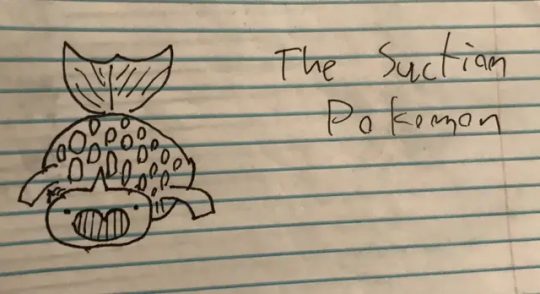
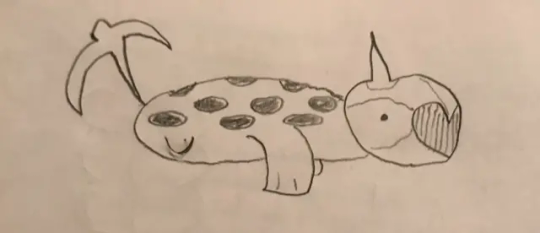
2 notes
·
View notes
Text
I was tagged by @littlesparrow42 (Tag 10 or more people you want to get to know better.)
Relationship status: Single. I've never even been on a date.
Favorite color: Blue!
Song stuck in my head: Me and My Broken Heart, by Rixton
Favorite food: Chili! My mom makes the best chili ever! Pizza is a very close second
Last song listened to: Turn Back Time, by WayV
Dream trip: I went to New York City when I was 14 to go to Central Park and see the statue of Balto in person. That was one dream trip come true and the only other one I have at the moment is to go to the Cleveland Museum of Natural History where Balto himself is on display. It was wonderful to see his statue in person, but to get to see him? That would be BEYOND amazing
Last thing I googled: Where the local recycling center is. I have an old laptop battery I need to get rid of
Tagging: @siren-canary @madisonrooney @catloafs @90s-2000s-barbie and uuuuhhh, I guess if anyone else wants to do this, go ahead! Thanks @littlesparrow42 for tagging me! 😊
3 notes
·
View notes
Text
i have a special relationship with dunkleosteus because i grew up going to the cleveland museum of natural history which is around where it was discovered and has The Worlds Largest Collection of Dunkleosteuses and there was always a giant model of one hanging from the ceiling. i dont care how big or small it is dunkleosteus is my friend forever
3 notes
·
View notes
Text
from 1/26/24 aAP News article...
"NEW YORK (AP) — New York’s American Museum of Natural History is closing two halls featuring Native American objects starting Saturday, acknowledging the exhibits are “severely outdated” and contain culturally sensitive items....
The museum said in October that it would pull all human remains from public display, with the aim of eventually repatriating as much as it could to Native American tribes and other rightful owners...
Earlier this month, Chicago’s Field Museum covered several displays containing Native American items. Harvard University’s Peabody Museum of Archaeology and Ethnology has said it would remove all Native American funerary items from its exhibits. The Cleveland Museum of Art is another institution that has taken similar steps.
“Covering displays or taking things down isn’t the goal,” she (head of the Association of American Indian Affairs) said. “It’s about repatriation — returning objects back to tribes. So this is just one part of a much bigger process.”..."
1 note
·
View note
Note
hi penny! i’m taking a trip to cleveland soon and was wondering if you had any recommendations for things in cleveland/the area that are fun to do??
hi! I've actually only been to cleveland a few times (I live two hours away, I just sometimes go there to see musicals and concerts haha). so if you're into theater, there's playhouse square, which has some great regional theater and touring productions! other than that, I haven't done much up there...it's by the lake so I think it's always nice to go to a park and sit by the water. there's the rock and roll hall of fame which is a pretty basic "tourist-y" suggestion but hey if you like that stuff I'd check it out! I personally love museums, the only one I've been to in cleveland was this medical history museum that was really interesting, but a quick google search shows there's also a history and natural history museum if you'd like to look into those :) that's all I've ever really personally done haha but I hope it helped a little? enjoy your trip!
2 notes
·
View notes